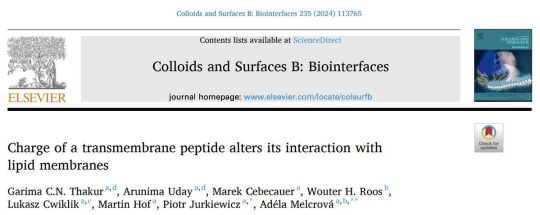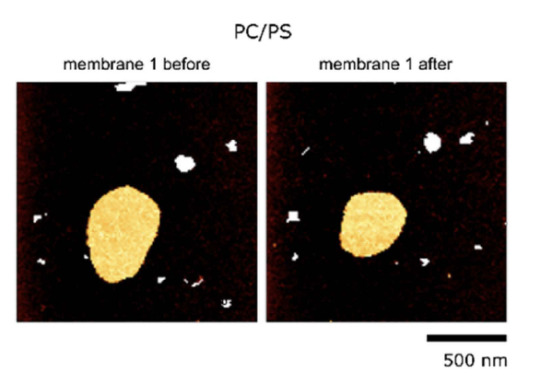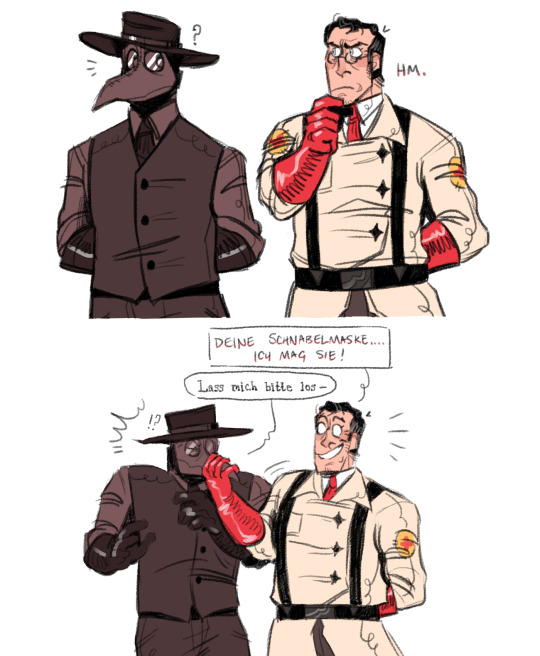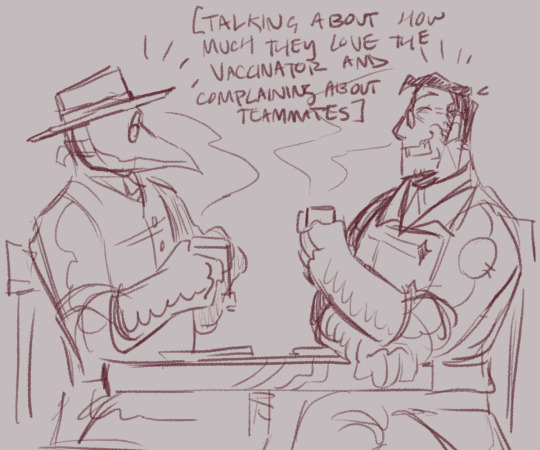#Research collaboration
Explore tagged Tumblr posts
Text
Meharry Medical College and Global Partners Build Largest African Ancestry Genomic Database
Meharry Medical College, in collaboration with Regeneron Genetics Center, AstraZeneca, Novo Nordisk, and Roche, has launched an initiative to create the world’s largest genomic database of individuals with African ancestry. The project aims to collect genetic material from 500,000 participants to develop a new reference genome that better represents Black populations, potentially leading to…
#African ancestry#anonymous data#AstraZeneca#diagnostic tests#Diaspora Human Genomics Institute#genetic material#genetic research#genomic database#grant program.#HBCUs#health disparities#medicine development#Meharry Medical College#Novo Nordisk#pharmaceutical companies#reference genome#Regeneron Genetics Center#research collaboration#Roche#STEM education#underrepresentation
0 notes
Text
Strategic Insights into the Clinical Trial Investigative Site Network Market
The global clinical trial investigative site network market size is expected to reach USD 12.5 billion by 2030. Growing investments in pharmaceutical R&D, increasing demand for new therapies and complications associated with site management of clinical trials are some of the major factors driving the growth of the industry. There has been a consistent rise the clinical trials in the last 5 years. For instance, according to ClinicalTrials.gov, over 262,298 trials were registered in 2018, whereas as of September 2022, over 399,518 trials were registered. The clinical trials are expected to grow even further as the funding for research improves.

Gain deeper insights on the market and receive your free copy with TOC now @: Clinical Trial Investigative Site Network Market Report
This is expected to propel the growth of the industry post-pandemic. There is a growing focus on reducing the cost associated with clinical research. Hiring a clinical trial investigative site network supports the regulatory function, improves the enrollment of participants, assists in data management, and quality assurance. It increases process compliance, reduces process issues with each trial, and helps with faster trial initiations, and shorter trial timelines. These factors are supporting the demand for clinical investigative site networks. The governments are actively trying to improve R&D by providing tax deductions. For instance, in January 2022, the Indian government stated that it is providing a weighted average tax deduction of up to 200% in R&D.
Such initiatives are expected to improve the R&D activities on drugs and thus support industry growth. According to the IQVIA, report on oncology trends, clinical trials for cancer have been increasing for the last 10 years. For instance, in 2011, 1,242 trials were registered for cancer, and as of 2021, 2,335 trials were registered for cancer. The number of clinical trials for cancer is expected to rise even further owing to the growing prevalence of the disease. This is expected to improve the demand for clinical investigative site networks for cancer clinical trials post-pandemic.
#Clinical Trials#Investigative Sites#Clinical Research#Clinical Trial Network#Medical Research#Clinical Site Management#Trial Coordination#Research Networks#Patient Recruitment#Healthcare Innovation#Data Integrity#Patient Centricity#Trial Management#Research Collaboration#Protocol Compliance#Site Monitoring#Clinical Operations#Healthcare Quality#Patient Engagement#Clinical Data Management
0 notes
Text
Optimizing Your Scientific Workflow With Data And Informatics Consulting
Do you want to optimize your scientific workflow? It can be a daunting task, but with the help of data and informatics consulting, it doesn't have to be. Data and informatics consulting provides the expertise and experience you need to ensure your research is as efficient and effective as possible. In this article, we'll explore how data and informatics consulting can help streamline your scientific workflow.
Data and informatics consulting involves using technology to analyze data quickly and accurately. With the right tools, consultants can identify patterns in large datasets that might otherwise go unnoticed. This means they can spot potential problems before they become major issues, saving time and money in the process. Furthermore, these professionals have an in-depth understanding of how different systems interact with one another, allowing them to develop optimal solutions for complex processes.
Finally, data and informatics consulting can provide invaluable insights into ways to improve your scientific workflow. From identifying areas where efficiency improvements can be made to finding new ways to save time on complex tasks, these professionals are essential for any research team looking to streamline their operations. So don't hesitate - leverage the power of data and informatics consulting today!
Definition Of Scientific Workflow
Scientific workflows involve the combination of data and techniques to create new knowledge. It's an iterative process that starts with a research question, then moves through data collection and analysis, to finally ends with presenting findings. Each step of the workflow requires careful planning and execution.
Data management is integral to scientific workflows. Data must be collected, organized, analyzed, stored, and shared in order for meaningful results to be obtained. This means that efficient data management practices must be used throughout the workflow process. In addition, data must be kept secure and protected from unauthorized access or manipulation.
Informatics consulting can help optimize a scientific workflow by providing expertise in data management, analysis techniques, software tools, and more. With the right team of experts on board, scientists can streamline their workflows and gain insights faster than ever before.
Benefits Of Optimizing It
Now that we have a clear understanding of what scientific workflow is, let's explore the advantages of optimizing it.
Firstly, optimizing your scientific workflow can help you save time. This is because data and informatics consulting services can help you simplify complex processes and increase the accuracy of analysis results. By having an efficient workflow, scientists are able to quickly identify trends in their data and generate actionable insights. Furthermore, they can automate tedious tasks that would otherwise take up valuable time and resources. This allows them to focus more on important projects and research goals.
Secondly, it helps to improve collaboration among scientists. Data and informatics consulting services allow teams to share information easily and securely, which increases the efficiency of communication between members. Additionally, it provides teams with a better way to track progress on their projects since everyone is working off the same platform. All this leads to greater engagement among team members, leading to better results overall.
Finally, it also helps reduce errors in data processing. Data and informatics consulting services provide access to advanced tools that make it easier for scientists to spot discrepancies or inaccuracies in their data sets before making decisions based on them. This ensures that all data used for analysis is accurate and reliable, leading to improved outcomes from experiments or studies. Ultimately, by using these services, scientists can be confident in the accuracy of their findings while also reducing the risk of mistakes being made due to inaccurate data processing.
The Role Of Data And Informatics Consulting
Data and informatics consulting can play an invaluable role in optimizing scientific workflows. Their expertise can help streamline processes, leading to greater efficiency, accuracy, and effectiveness. Firms specializing in this field have the experience and understanding of the latest technology to ensure that scientists are able to utilize their data effectively.
They can advise on a range of issues from data collection to storage, analysis, visualization, and reporting. Additionally, they provide guidance for the implementation of analytics tools such as machine learning and artificial intelligence. Ultimately, this helps scientists make more informed decisions based on deeper insights into their data sets.
Data and informatics consulting firms are also well-positioned to create custom solutions tailored to an organization's specific needs. By leveraging their knowledge of data science methods and technologies, these consultants are able to develop innovative solutions that enable organizations to maximize their data’s potential. This allows scientific teams to focus on research objectives rather than dealing with tedious technical tasks related to managing data.
The right data and informatics consulting partner can be a powerful ally in optimizing workflows for any scientific organization or team. With their help, organizations can improve their efficiency while gaining deeper insight into their datasets and making better decisions based on this information.
Analyzing Your Current Workflows
Now that you understand the role of data and informformatics consulting in optimizing your scientific workflow, it's time to analyze your current workflows. Understanding how you currently approach research and what processes are working is key to understanding where improvements can be made.
The first step in analyzing your current workflows is to document all the steps involved in each project. This will help identify which steps are crucial to a successful outcome and which could use some optimization. After documenting the process, assess how much time each step takes and look for any redundancies or areas where processes can be streamlined. Once you have identified those areas, determine if automation could save time and improve productivity.
Finally, evaluate how secure your existing systems are by looking at access controls and data security protocols. With this information, you'll be able to create a plan for improving your overall efficiency while still maintaining important security measures.
Identifying Opportunities For Improvement
The first step in optimizing your scientific workflow with data and informatics consulting is to identify opportunities for improvement. To do this, you must analyze your current methods and processes, create an inventory of key tools and technologies, and assess the effectiveness of each component.
When evaluating your existing workflow, look for areas where processes are inefficient or outdated. Are there steps that can be automated? Is there a need to integrate additional software solutions or new data sources? Are there any manual processes that could be streamlined? Make a list of any issues that need to be addressed and prioritize them according to their importance.
Once you have identified potential improvements, it’s time to start implementing solutions. Develop a plan for making changes, such as introducing new technologies or streamlining existing processes. Outline the resources required for each step and set realistic timelines for completion. By taking the time to identify opportunities for improvement and develop an actionable plan, you can ensure your scientific workflow is optimized for success.
Automating Processes
Having identified where improvements can be made, the next step is to consider how to automate processes in order to optimize your scientific workflow. Automation has the potential to reduce cost and time while increasing efficiency and accuracy.
To begin automating processes, it is important to understand what types of tasks are best suited for automation. Tasks that involve repetitive processes, such as data entry or data analysis, are good candidates for automation as they require minimal human intervention. Additionally, tasks that involve complex calculations or other computational processes may also be suitable for automation.
Once tasks have been identified, the next step is to determine which tools and technologies can help automate these processes. Data and informatics consulting can assist in this process by providing insights into the most effective technologies for automating specific tasks. These insights can include recommendations on software solutions and hardware platforms, as well as advice on how to configure systems for optimal performance. Automating processes with the right tools can ultimately lead to significant improvements in efficiency and cost savings.
Utilizing Cloud-Based Solutions
Cloud-based solutions are becoming increasingly popular for managing data and informatics in the scientific workflow. They offer a range of advantages that can help optimize the entire process. Firstly, cloud-based solutions offer a secure storage platform that is easily accessible from any device connected to the internet. It also helps eliminate the need for expensive hardware and IT support costs, as cloud-based solutions are typically priced on a monthly subscription basis with high scalability depending on your needs. Finally, they provide an easy way to share data with collaborators securely, enabling easy collaboration within research teams.
Data and informatics consulting can help organizations make the most of cloud-based solutions by providing expertise in areas such as setting up cloud infrastructure, migrating existing data, and implementing security measures to protect sensitive information. This kind of consulting is especially useful for companies looking to transition from traditional computing models to more modern methods of data management. Additionally, it can help streamline processes and ensure maximum efficiency for scientific workflows.
Cloud-based solutions provide many benefits which can be used to improve scientific workflow processes. Through careful planning and expert consultation, organizations can take advantage of these tools to maximize their productivity and achieve their goals more quickly and efficiently.
Leveraging Big Data Analytics
Data and informatics consulting can help streamline your workflow by leveraging big data analytics. This type of consultative approach can be used to identify trends, assess risks, and plan for more effective outcomes. With big data analytics, you get the insights you need to make decisions that will have an impact on the success of your scientific research.
The first step in leveraging big data analytics is to gather relevant data from multiple sources. This could include records from online databases, surveys, questionnaires, interviews and much more. Once this information is collected, it must be analyzed to uncover patterns or correlations that may exist between different factors. Using advanced algorithms and statistical methods, consultants can discover correlations between variables and gain insight into the underlying causes of certain phenomena.
This analysis of large datasets can enable researchers to determine which strategies are most effective in their research efforts. By combining this knowledge with predictive modeling techniques, scientists can develop strategies that maximize efficiency while minimizing costs and effort invested in their projects. In addition to this, big data analytics also provides detailed visualizations which allow researchers to monitor changes in their research over time and gain deeper understanding into the dynamics at play within their research studies.
System Testing And Validation
Having explored the potential of big data analytics, it's time to turn our attention to system testing and validation. To ensure that systems are functioning properly and producing accurate results, they must be tested extensively and verified with rigorous standards. This requires developing a comprehensive test plan that addresses all aspects of the system's functionality.
Systems should be tested in multiple environments, including development, staging, and production. Testing should include both functional and non-functional tests such as performance, scalability, security, reliability, usability, and compatibility tests. Additionally, automated tests can be used to supplement manual tests and identify any issues with system performance or data accuracy.
Once testing is complete and the system is validated for proper functioning, it can then be deployed for use. This process helps to ensure that systems are reliable and trustworthy before being put into active use. If done correctly, this process can optimize your workflow by eliminating any unforeseen errors or inaccuracies from occurring during production runs.
Continuous Monitoring And Maintenance
Continuous monitoring and maintenance of data and informatics systems is essential to ensure their efficient operation. Keeping these systems up-to-date with the latest software, hardware, and security patches can prevent costly issues down the road. There are a few steps that need to be taken to ensure that your scientific workflow is properly maintained.
First, data should be regularly backed up in order to protect it from potential loss or corruption. Regular backups also make it easier to restore data if any issues arise. Second, access control systems should be monitored closely so that users only have access to the information they need. Finally, system health checks should be conducted on a regular basis to identify any potential issues that could affect performance.
When done correctly, these steps can help guarantee smooth operation of data and informatics systems in your scientific workflow. Regular monitoring and maintenance also provides peace of mind knowing that your data is secure and performing optimally.
Conclusion
In conclusion, optimizing your scientific workflow with data and informatics consulting can be a great asset to any organization. It helps you identify areas for improvement and make necessary changes to keep up with the ever-changing field of science. By utilizing cloud-based solutions, leveraging big data analytics, conducting system testing and validation, and continuously monitoring and maintaining these systems, you can ensure that your scientific workflow is effective and efficient. With the help of an experienced data and informatics consultant, you can create a streamlined workflow that will save time, money, and energy while producing top-notch results. So if you're looking to get the most out of your scientific workflows, don't hesitate to contact a data and informatics consultant today!
#Scientific workflow#Data management#Informatics consulting#Research efficiency#Data analysis#Data visualization#Research collaboration#Data security#Laboratory automation#Data integration#Scientific reproducibility#Cloud computing#High-performance computing#Machine learning#Research data governance.
0 notes
Text

@vaxxman this emesis blue scene seems a little different....?
#doodles#tf2#tf2 medic#emesis blue#its going in the main tags because its TECHNICALLY a redraw#but also not#grins#smiles#research collaborator [|87
515 notes
·
View notes
Text
Carry On Through the Ages (all the way back to Ancient Egypt)

"A Prophesied Rivalry:
This painting, remarkably well-preserved, was recovered from the tomb of a previously unknown and as-yet unidentified woman of significant power, whose rediscovery has fascinated Egyptologists. Historical analysis suggests she was believed to possess a gift for prophecy, and this artwork is very likely an attempt to illustrate one of her visions.
Here, she and her husband are depicted championing their son, who faces an outsider in combat. The outsider is also supported by an enigmatic figure of seemingly great power, foretelling a great struggle between two mighty forces, though whether these forces were meant to be supernatural or more mundane is not clear.
The dog shown, intriguingly, held a place of honor within the family and was found interred in a nearby chamber. The cat's presence, however, remains enigmatic, as the "Cats vs Dogs" reputation cultivated by these domesticated animals today is not something observed elsewhere in Ancient Egyptian artwork. Noted Egyptologists Miriam Blackwood and Theodore Langston have half-jokingly speculated that its inclusion was a mere artistic preference, hinting at the painter’s fondness for cats."
I've always loved Ancient Egyptian art, ever since childhood. I've wanted to do something like this ever since I first read of Baz's ancestry, so @carryonthroughtheages seemed the best excuse to dabble in this ancient art style.
I talked to @monbons about it and apparently the stars and planets were in alignment that day, because she agreed to collaborate with me. She’s created some absolutely gorgeous fiber art to go along with Natasha’s prophecies. And then she surprised me with a Baz doll, because she is amazing. (I love him so much and we are going to look at fashion books together. It’s going to be awesome.)
This is definitely fanart of both Ancient Egyptian art and Snowbaz. Both are worth diving into if you find yourself curious to know more!
#snowbaz#baz pitch#simon snow#cotta 2024#carry on through the ages#ancient egyptian art#fanart of ancient egyptian art really#collaboration with monbons ftw#I did so much research for this but I definitely did not become an egyptologist over the course of a month#though damn I really wanted to#credit to my brother for the academic analysis#he's gifted#(Also in case you were wondering Miriam and Theodore are completely fictional though now I want to know their entire life story)#and if you're curious I love the Brendan Fraser version of The Mummy the bestest#though the Tom Cruise one has epic costuming#(I think the fashion of the period is what got my interest way back when if I'm honest)#Did I mention this Baz doll has JEWELRY?#I love him so much I will probably not shut up about it for awhile#I also probably drew this piece as an excuse to put Baz in jewelry#though now I wonder why I ever thought I needed the excuse#YAY COTTA#Jodarta
136 notes
·
View notes
Text
THESIS QUESTIONNAIRE
Hi! I'm currently undertaking a thesis about roleplay and collaborative storytelling online and I'm circulating a questionnaire as a part of my research! I invite anyone who is or has been into roleplay of any kind to fill it out, I would greatly appreciate it!
Here is the link!
(If there are any questions or issues, don't be afraid to message me!)
90 notes
·
View notes
Text
Survey recruitment; I gave feedback as a later consultant & Tuttle is another Autistic AAC user who was involved in the project from the start. Shares are Definitely Helpful :)
Are you an autistic adult who uses speech and other tools (such as augmentative and alternative communication [AAC]) to communicate?
If you answered yes, please consider participating in this survey at this link:
We are interested in learning about the speech, AAC, and assessment experiences of autistic people who use speech and AAC. We are curious if a modified version of the Communicative Participation Item Bank (CPIB) can be a reliable tool for clinicians to utilize in measuring the internal experiences of speaking autistic people. Regarding assessment, we are interested in understanding how their speech efficacy, or the extent to which one can use speech to completely communicate their intended meaning, was measured and considered in the evaluation process and if the evaluation resulted in a recommendation of an AAC tool.
The survey includes a mix of multiple choice, slider, and written response questions and is estimated to take between 10-20 minutes.
No identifying information will be collected in this survey.
Please reach out with any questions or concerns via email.
We thank you in advance for contributing your insight on this important topic!
Karina Rayl, B.S. (Lead Investigator)
Graduate Student
Speech and Hearing Sciences
Portland State University
Email: [email protected]
Pang Lee Herr, B.S. (Lead Investigator)
Graduate Student
Speech and Hearing Sciences
Portland State University
Email: [email protected]
Brandon Eddy, M.A., CCC-SLP (Co-investigator and Faculty Advisor)
Associate Clinical Professor
Speech and Hearing Sciences
Email: [email protected]
Amy Donaldson, Ph.D. CCC-SLP (Co-investigator and Faculty Advisor)
Associate Professor
Speech and Hearing Sciences
Email: [email protected]
Tuttle (External Collaborator)
Email: [email protected]
Alyssa Zisk, Ph.D. (External Collaborator)
Email: [email protected]
#aac#actuallyautistic#disabilty#autism#aac user#actuallydisabled#disabled researchers#autistic researchers#yes it's a research post and yes the two 'external collaborators' are both autistic aac users#please only use our emails for things related to the research but that is what they're for
54 notes
·
View notes
Note
I could be really off the mark here, but I thought I remembered seeing you reblog art shipping Tintin and captain Haddock?? Anyway, saw this mural and thought of you

this is one of the funniest asks i've ever received LMAO good mural. thank you for sharing. good for them good for them
#tintin#if anyone tries to bring any Discourse to me abt tintin/haddock don't do it#i know what herge said. i just think it was stupid and inaccurate to what he created#i don't give a shit tintin is a grown man. he shoots guns and gets shot and travels around the world and no one questions this#herge collaborated with nazis i do what i want#< another issue i am not here to talk about lol do your own research#anyway good mural#asks
46 notes
·
View notes
Note
For nosy anons: #44 Tell me a random fact about anything
I’m prepared to learn 🫡
Random fact? A'ight. Les see...
Th' first toothbrush commercial, for th' more modern, nylon brush bristles we have nowadays, dates back to 1938!
I even have th' vintage ad downloaded for Dr. West’s Miracle-Tuft toothbrush:

“A toothbrush without bristles!” Without hog hair bristles is what they mean haha.
#i learned this recently actually#saw a few articles that got recommended t' me bout th' history of toothbrushes so y'know#had t' do m' research#answerin asks#💜#🦷#host collaboration post#dr pepper collective
7 notes
·
View notes
Text
I used to like saying "gender is a social construct," but I stopped saying that because people didn't tend to react well - they thought that I was saying gender wasn't real, or didn't matter, or could be safely ignored without consequences. Which has always baffled me a bit as an interpretation, honestly, because many things are social constructs - like money, school, and the police - and they certainly have profound effects on your life whether or not you believe in them. And they sure don't go away if you ignore them.
Anyway. What I've taken to saying instead is, "gender is a cultural practice." This gives more of a sense of respect for the significance gender holds to many people. And it also opens the door to another couple layers of analysis.
Gender is cultural. It is not globally or historically homogeneous. It shifts over time, develops differently in different communities, and can be influenced by cross-cultural contact. Like many, many aspects of culture, the current status of gender is dramatically influenced by colonialism. Colonial gender norms are shaped by the hierarchical structure of imperialist society, and enforced onto colonized cultures as part of the project of imperial cultural hedgemony.
Gender is practiced. What constitutes a gender includes affects and behaviors, jobs or areas of work, skillsets, clothing, collective and individual practices of gender affiliation and affirmation. Any or all of these things, in any combination, depending on the gender, the culture, and the practitioner.
Gender encompasses shared cultural archetypes. These can include specific figures - gods and goddesses, mythic or fictional characters, etc - or they can be more abstract or general. The Wise Woman, Robin Hood, the Dyke, the Working Man, the Plucky Heroine, the Effete Gay Man, etc etc. The range of archetypes does not circumscribe a given gender, that is, they're not all there is to gender. But they provide frameworks and reference points by which people relate to gender. They may be guides for ways to inhabit or practice a gender. They may be stereotypes through which the gendered behavior of others is viewed.
Gender as a framework can be changed. Because it is created collectively, by shared acknowledgement and enforcement by members of society. Various movements have made significant shifts in how gender is structured at various times and places. The impact of these shifts has been widely variable - for example, depending on what city I'm in, even within my (fairly culturally homogeneous) home country, the way I am gendered and reacted to changes dramatically. Looping back to point one, we often speak of gender in very broad terms that obscure significant variability which exists on many scales.
Gender is structured recursively. This can be seen in the archetypes mentioned above, which range from extremely general (say, the Mother) to highly specific (the PTA Soccer Mom). Even people who claim to acknowledge only two genders will have many concepts of gendered-ways-of-being within each of them, which they may view and react to VERY differently.
Gender is experienced as an external cultural force. It cannot be opted out of, any more than living in a society can be opted out of. Regardless of the internal experience of gender, the external experience is also present. Operating within the shared cultural understanding of gender, one can aim to express a certain practice of gender - to make legible to other people how it is you interface with gender. This is always somewhat of a two-way process of communication. Other people may or may not perceive what you're going for - and they may or may not respect it. They may try to bring your expressed gender into alignment with a gender they know, or they might parcel you off into your own little box.
Gender is normative. Within the structure of the "cultural mainstream," there are allowable ways to practice gender. Any gendered behavior is considered relative to these standards. What behavior is allowed, rewarded, punished, or shunned is determined relative to what is gender normative for your perceived gender. Failure to have a clearly perceivable gender is also, generally, punished. So is having a perceivable gender which is in itself not normative.
Gender is taught by a combination of narratives, punishments, and encouragements. This teaching process is directed most strongly towards children but continues throughout adulthood. Practice of normatively-gendered behaviors and alignment with 'appropriate' archetypes is affirmed, encouraged, and rewarded. Likewise 'other'- gendered behavior and affinity to archetypes is scolded, punished, or shunned. This teaching process is inherently coercive, as social acceptance/rejection is a powerful force. However it can't be likened to programming, everyone experiences and reacts to it differently. Also, this process teaches the cultural roles and practices of both (normative) genders, even as it attempts to force conformity to only one.
Gender regulates access to certain levers of social power. This one is complicated by the fact that access to levers of social power is also affected by *many* other things, most notably race, class, and citizenship. I am not going to attempt to describe this in any general terms, I'm not equipped for that. I'll give a few examples to explain what I'm talking about though. (1) In a social situation, a man is able to imply authority, which is implicitly backed by his ability to intimidate by yelling, looming, or threatening physical violence. How much authority he is perceived to have in response to this display is a function of his race and class. It is also modified by how strongly he appears to conform to a masculine ideal. Whether or not he will receive social backlash for this behavior (as a separate consideration to how effective it will be) is again a function of race/class/other forms of social standing. (2) In a social situation, a woman is able to invoke moral judgment, and attempt to modify the behavior of others by shame. The strength of her perceived moral authority depends not just on her conformity to ideal womanhood, but especially on if she can invoke certain archetypes - such as an Innocent, a Mother, or better yet a Grandmother. Whether her moral authority is considered a relevant consideration to influence the behavior of others (vs whether she will be belittled or ignored) strongly depends on her relative social standing to those she is addressing, on basis of gender/race/class/other.
[Again, these examples are *not* meant to be exhaustive, nor to pass judgment on employing any social power in any situation. Only to illustrate what "gendered access to social power" might mean. And to illustrate that types of power are not uniform and may play out according to complex factors.]
Gender is not based in physical traits, but physical traits are ascribed gendered value. Earlier, I described gender as practiced, citing almost entirely things a person can do or change. And I firmly believe this is the core of gender as it exists culturally - and not just aspirationally. After the moment when a gender is "assigned" based on infant physical characteristics, they are raised into that gender regardless of the physical traits they go on to develop (in most circumstances, and unless/until they denounce that gender.) The range of physical traits like height, facial shape, body hair, ability to put on muscle mass - is distributed so that there is complete overlap between the range of possible traits for people assigned male and people assigned female. Much is made of slight trends in things that are "more common" for one binary sex or the other, but it's statistically quite minor once you get over selection bias. However, these traits are ascribed gendered connotations, often extremely strongly so. As such, the experience of presented and perceived gender is strongly effected by physical traits. The practice of gender therefore naturally expands to include modification of physical traits. Meanwhile, the social movements to change how gender is constructed can include pushing to decrease or change the gendered association of physical traits - although this does not seem to consistently be a priority.
Gender roles are related to the hypothetical ability to bear children, but more obliquely than is often claimed. It is popular to say that the types of work considered feminine derive from things it is possible to do while pregnant or tending small children. However, research on the broader span of human history does not hold this up. It may be true of the cultures that gave immediate rise to the colonial gender roles we are familiar with - secondary to the fact that childcare was designated as women's work. (Which it does not have to be, even a nursing infant doesn't need to be with the person who feeds it 24 hours a day.) More directly, gender roles have been influenced by structures of social control aiming for reproductive control. In the direct precursors of colonial society, attempts to track paternal lineage led to extreme degrees of social control over women, which we still see reflected in normative gender today. Many struggles for women's liberation have attempted to push back these forms of social control. It is my firm opinion that any attempt to re-emphasize childbearing as a touchstone of womanhood is frankly sick. We are at a time where solidarity in struggle for gender liberation, and for reproductive rights, is crucial. We need to cast off shackles of control in both fights. Trying to tie childbearing back to womanhood hobbles both fights and demeans us all.
Gender is baked deeply enough into our culture that it is unlikely to ever go away. Many people feel strongly about the practice of gender, in one way or another, and would not want it to. However we have the power to change how gender is structured and enforced. We can push open the doors of what is allowable, and reduce the pain of social punishment and isolation. We can dismantle another of the tools of colonial hedgemony and social control. We can change the culture!
#Gender theory#I have gotten so sick of seeing posts about gender dynamics that have no robust framework of what gender IS#so here's a fucking. manifesto. apparently.#I've spent so long chewing on these thoughts that some of this feels like. it must be obvious and not worth saying.#but apparently these are not perspectives that are really out in the conversation?#Most of this derives from a lot of conversations I've had in person. With people of varying gender experiences.#A particular shoutout to the young woman I met doing collaborative fish research with an indigenous nation#(which feels rude to name without asking so I won't)#who was really excited to talk gender with me because she'd read about nonbinary identity but I was the first nb person she'd met#And her perspective on the cultural construction of gender helped put so many things together for me.#I remember she described her tribe's construction of gender as having been put through a cookie cutter of colonial sexism#And how she knew it had been a whole nuanced construction but what remained was really. Sexist. In ways that frustrated her.#And yet she understood why people held on to it because how could you stand to loose what was left?#And how she wanted to see her tribe be able to move forward and overcome sexism while maintaining their traditional practices in new ways#As a living culture is able to.#Also many other trans people of many different experiences over the years.#And a handful of people who were involved in the various feminist movements of the past century when they had teeth#Which we need to have again.#I hate how toothless gender discourse has become.#We're all just gnawing at our infighting while the overall society goes wildly to shit#I was really trying to lay out descriptive theory here without getting into My Opinions but they got in there the last few bullet points#I might make some follow up posts with some of my slightly more sideways takes#But I did want to keep this one to. Things I feel really solidly on.
19 notes
·
View notes
Text
I need more franco-belgian interactions. I need more François and Emma headcanons. I need them to be friends. I need them to be silly. I need more of them please bro please please pl-
#temmie talks#been thinking about them all day#Hetalia fandom please consider Emma and François as friends esp in the modern age pls I need them to get along#delete later#I can't speak for their relationship politically and historically bc I need to do more research but when I see the amount of times France#and Belgium (and luxembourg!) collaborate in creative fields I just 😩 Them!!#also I think françois needs more female friends okay
14 notes
·
View notes
Text

The reason Harry Truman called Allen Dulles a traitor.
Many people have heard of Operation Paperclip. Far fewer have heard of Operation Sunrise.
6 notes
·
View notes
Note
Do you do research? :) I work on japanese rn (theoretical stuff, mostly phonology)
currently yes! i'm working on a particular intersection of historical linguistics/morphology/discourse, but i don't want to get language-specific because i enjoy the semblance of anonymity here and it's a pretty small field.
#ditching it soon (at least professionally) for a non-academic life#however i have promised colleagues that they can keep me as their pet independent researcher for collaboration
47 notes
·
View notes
Text
New publication out!
We were curious what happens with the lipid membrane if proteins are inside. As a model of membrane proteins we use transmembrane peptides with neutral and positive charge. The charges turn out to be quite crucial in the peptides influence on the lipids.
publication link: https://doi.org/10.1016/j.colsurfb.2024.113765…

All transmembrane peptides hinder mobility of lipids around. The positive charges in the peptide make this hindering a long range influence.

The membrane with the positive peptides then has heterogeneities in the lipid mobility. This hampers free rearrangement of lipids and leads to lower ability to seal ruptures. You can see below how the membrane stays fragmented after indentations with AFM (atomic force microscope), which is basically a very tiny tip that scans the surface of the membrane for images and can also push through it to test mechanical stability.

For comparison this is how it looks like with a membrane without any peptides. The mebrane seals the ruptures induced by the AFM tip and recovers its round shape. The same happens if we have a neutral, non-charged, peptide.

With this work we highlight the importance of including charges of proteins and peptides in membrane model studies.
And last but not least...
This is the very first time I am the last corresponding author of a publication. I am immensely proud on myself!
#science#women in science#research#biophysics#afm#fluorescence#simulations#peptides#proteins#cell membranes#publication#collaboration#corresponding author#proud#original content
16 notes
·
View notes
Text


so @vaxxman, about that coffee?
#i have to annoy all my friends at least once its a rite of passage#and its your turn#i meant to actually do more for that second one but im just going to have to post the sketch for now unfortunately#granted you dont despise me for drawing you off model (probably) then ill have to draw you something else soon anyway#doodles#tf2 medic#tf2#research collaborator [|87
766 notes
·
View notes
Text
ok i know this is quiet hours for most of my mutuals but guys if hypothetically someone were to steal your masters thesis how would you respond to that
#the men of this department really are something else#not f1#context: we met the other day to discuss a separate thing#during that we were talking abt our research projects#the next time I saw him he was like what you were talking abt was so interesting I switched my own topic to that and joined your group!#I was like ok I was talking abt my research which I’m hoping to turn into a thesis but ok. fine#today I talk to him like how’s the research going then? he’s like goo! :) so good I might even turn it into a thesis!#ok ok. so my thesis. ur turning it into the same thesis as mine#peace and love on planet grad school. collaborate. cooperate. communicate
9 notes
·
View notes